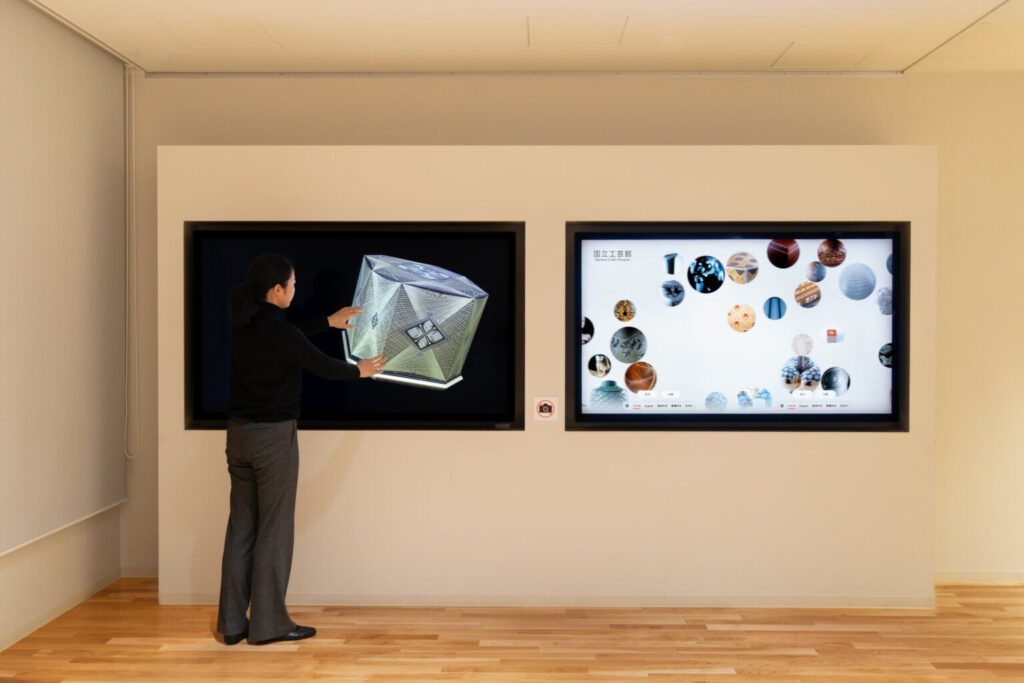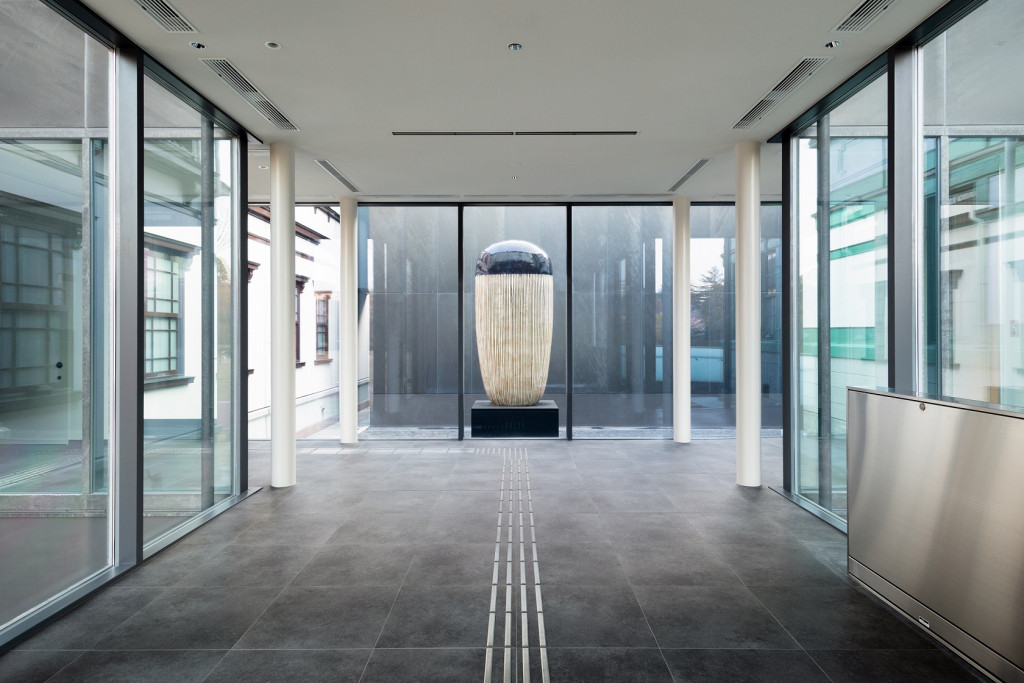Watch, Read, Listen
Newsletter of The National Museum of Modern Art, Tokyo Learning Welcome to the World of Crafts: An Attempt at a New Way of Presenting the Collection of the National Crafts Museum
BackThe National Crafts Museum has been reborn since relocating from Kita-no-maru Park in Tokyo to Kanazawa, Ishikawa Prefecture in October 2020. As visitors step into the glass-walled entrance hall, they are greeted by the soaring presence of Kaneko Jun’s Untitled 13-09-04. Moving left, they pass under two arches before arriving in the exhibition spaces. Before that, however, they encounter a section of the wooden building that is now repurposed for a special display area introducing highlights from the collection through high-resolution digital images—a new initiative we call “Welcome to the World of Crafts.” This space is designed to introduce visitors to the world of crafts, and to welcome them to new ways of viewing and interacting with our collections.
This area features two 70-inch 8K touchscreen monitors, one of which employ a 2D viewing system. Across the screens, variously sized circles—resembling soap bubbles—float from left to right.

Let’s try it out by touching one of the circles. Instantly, a page appears, displaying images and explanations of the selected work. Each piece is typically represented by two or three images. Tapping the magnifying glass icon at the bottom right dramatically enlarges the image, allowing visitors to marvel at the intricate details.
One can observe the subtle undulations of silk fabric, or the precise interplay of light and shadow in the dyed sections. There’s the luminous harmony of a surface formed by casing glass, in which material and light merge seamlessly. Or take, for example, the razor-sharp talons of a hawk gripping its perch—so lifelike that it’s hard to believe they are made fromcold, inorganic metal.
Each of these details reflects the creative vision of the artists who brought these works to life. We hope that these high-resolution images will bring to light the feelings of visitors who have been moved by the artworks.
The other monitor features a 3D viewing system, developed in response to visitor requests for different perspectives on the items in the collection. While adjusting the way in which a piece is displayed might allow for a front-and-back view, presenting the bottom (foot) of the vessel is more challenging. In fact, the bottom of the vessel has a history of being traditionally regarded as one of the highlights. Some visitors have suggestedusing mirrors to make these details more accessible.
However, the National Crafts Museum’s collection also includes many works by contemporary artists, who often seek toredefine the relationship between the individual and the elements that constitute a piece, and often prefer a flat, neutralperspective that resists additional context. Striking a balance between an artist’s intent—which extends beyond mereaesthetics—and the need to present accessible and informative displays is not always easy.
In this system, we tried to harness the potential of virtual reality to create an environment unshackled by physicalconstraints. Users can freely adjust the viewing angles and magnification, leading to a more active and engagedexperience.
How can we ensure that this space, equipped with these two systems, will function not as the final destination but as thestarting point for a deeper engagement with crafts? This is a question we will continue to explore in the years to come,refining both our technology and our curatorial vision, with the viewing experience of the visitor always our key concern.

Photo by Koji Ishikawa
(Gendai no me, Newsletter of The National Museum of Modern Art, Tokyo No.635)
Release date :



